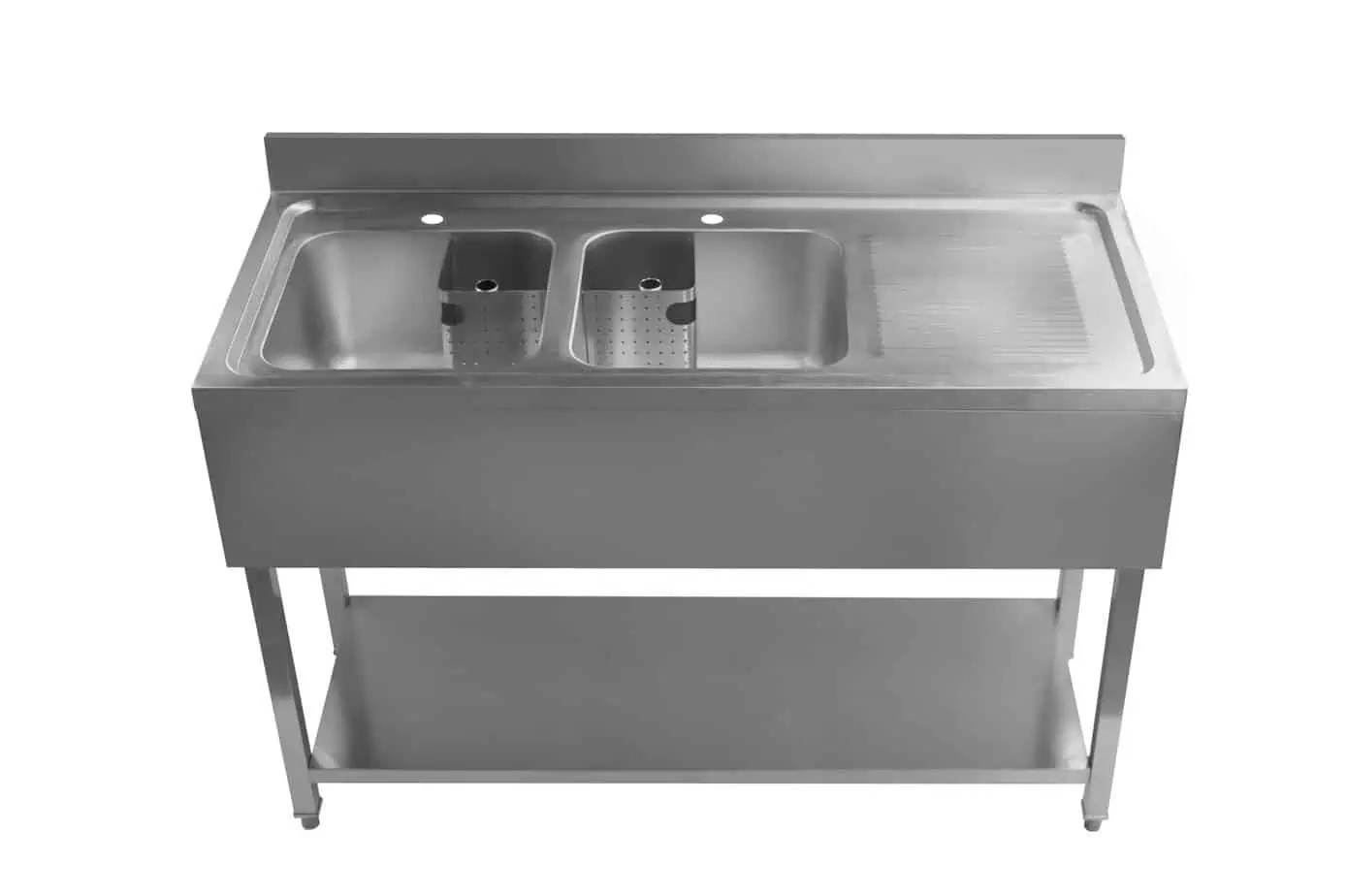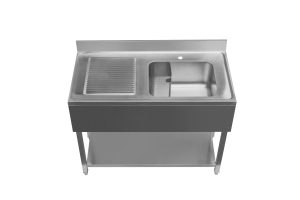Choosing a Commercial Sink
When it comes to choosing a commercial sink, the first thing you will realise is that there are quite a few types and variations of catering and washing sinks available. The second thing you will note is that most modern work environments need a combination of different sinks for different purposes, particularly food service establishments such as restaurants, bars and hotels. Let’s take a look at our simple guide and check out the different types that are on offer.
The Bar Sink
The bar sink is a compartment sink that is built to a lower level so it can fit under countertops and bars. The purpose of a sink like this is to empty drinks and other beverages. They can also feature speed racks to allow easy access to bottles and have enclosed compartments underneath for storing glasses.
Choosing a Commercial Sink – Single Bowl or Double Bowl
There are a few different types of compartment sink units available.
Single bowl catering sinks are often found in smaller kitchens were space may be tight. However, double bowl commercial sinks are favoured in larger environments where higher volume of meals are prepared and necessitate a larger washing area to cope with demand.
Sizes will vary according to design. For example, our small double bowl commercial sinks start from 1000mm right up to our largest double bowl catering sink which measures 1800mm with two bowls and two drainers. Our range of pot wash sinks begin at just 600mm and have extra deep bowls up to 400mm so you can easily wash large kitchen items. Whether you require a single pot wash sink or a double pot wash sink this depends on your space and needs.
The Disposal Sink
The disposal sink is designed to be used with a waste disposal unit. This type of sink should be covered when you aren’t using it, and silverware should be kept away from it.
Drop-In/Sink Units
The drop-in sink is also known as an inset sink. This is a special kind of sink. It is installed on a surface already placed in the kitchen and most usually, although not exclusively, within a domestic setting.
You can sink this into workbenches and countertops. Your typical drop-in sink has a flange located around the upper edge of the basin, and this will rest on the countertop.
A sink unit is a fully assembled sink that meets waist height and has a range of different configurations. They often come with pre-drilled holes to install mixer taps, rinse spray hose taps, and space for plumbing pipework at the rear.
Choosing a Commercial Sink – Hand Wash Sinks
Every restaurant needs hand wash sinks for hygiene purposes. Typically, these are located close to serving or food preparation areas so they can be accessed easily and frequently. Ideally, you should install them with a splashback to prevent cross-contamination of the surrounding area. Knee-operated hand wash sinks are popular because they don’t require you to touch the sink at all prior to washing your hands. Therefore, it reduces the chance of cross-contamination even further.
The Mop Sink
The mop sink, also known as a janitorial sink, is used for draining and filling mop buckets for cleaning. They can be installed with side guards, and some of them have taller cabinets for storage purposes. You can install these directly on the floor.
The Portable Sink
There are two main types of portable sinks. The first is a soak sink, which is typically a basin with a drain mounted on a rolling stand. This doesn’t have a tap faucet, but you can put it under a water source like a tap.
Alternatively, you have the handwashing cart. Predominantly used by mobile and outside users, this has two tanks – one that contains clean water and another that contains wastewater. If you want hot water, then you may need to connect this to an outlet.
Choosing a Commercial Sink – Final Thoughts
As you can see, there are plenty of commercial sinks for you to choose from. Your typical restaurant kitchen, bar and food service establishment will need a combination of sinks. This ensures hygiene standards can easily be met and maintained. With dozens of variations to choose from, there is a sink-and-tap combination for every requirement!



